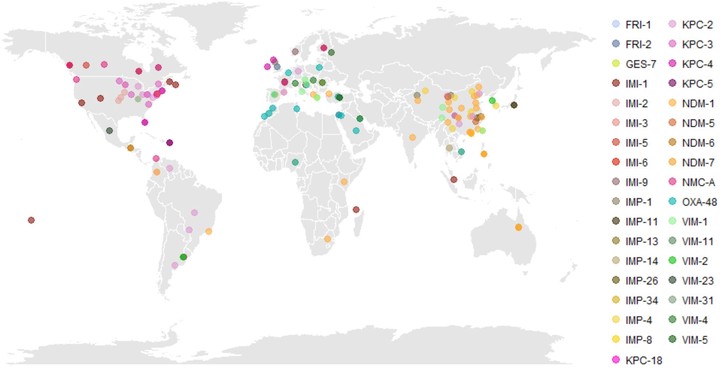Multidrug-resistant Enterobacter cloacae complex emerging as a global, diversifying threat

Abstract
The Enterobacter cloacae complex (ECC) includes common nosocomial pathogens capable of producing a wide variety of infections. Broad-spectrum antibiotic resistance, including the recent emergence of resistance to last-resort carbapenems, has led to increased interest in this group of organisms and carbapenem-resistant E. cloacae complex (CREC) in particular. Molecular typing methods based on heat-shock protein sequence, pulsed-field gel electrophoresis, comparative genomic hybridization, and, most recently, multilocus sequence typing have led to the identification of over 1069 ECC sequence types in 18 phylogenetic clusters across the globe. Whole-genome sequencing and comparative genomics, moreover, have facilitated global analyses of clonal composition of ECC and specifically of CREC. Epidemiological and genomic studies have revealed diverse multidrug-resistant ECC clones including several potential epidemic lineages. Together with intrinsic β-lactam resistance, members of the ECC exhibit a unique ability to acquire genes encoding resistance to multiple classes of antibiotics, including a variety of carbapenemase genes. In this review, we address recent advances in the molecular epidemiology of multidrug-resistant E. cloacae complex, focusing on the global expansion of CREC.